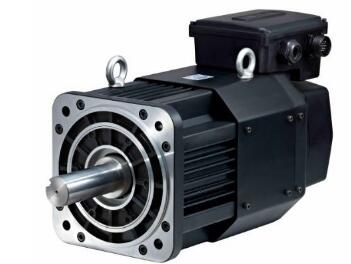
Previously, the editor introduced in detail how to identify servo motors. It can be seen that we can judge the inertia of the motor based on the size of the servo motor. We can also judge based on the ratio of the load inertia to the motor rotor inertia. In addition, we can also judge based on the motor's inertia. Judge by rated speed and torque. So what I want to introduce today is the characteristics and functions of the four control methods of servo motors!
Generally speaking, for the servo motor in CNC machine tools, its control method can be divided into open-loop control and closed-loop (semi-closed loop) control according to its structure. If the classification is more detailed, open-loop control can be divided into ordinary type and feedback compensation type, and closed-loop (semi-closed loop) control can also be divided into ordinary type and feedback compensation type.
1. Feedback compensation open-loop control
The accuracy of the open-loop system is low. This is because the step error, starting and stopping error of the servo motor, and the error of the mechanical system will directly affect its positioning accuracy. Therefore, it is recommended that everyone should use the compensation type for improvement. This system has the advantages of both open loop and closed loop, that is, it has the stability of open loop and closed loop. The system will not oscillate due to the machine tool's resonant frequency, crawling, stalling, etc. The feedback compensation open-loop control does not require gap compensation and pitch compensation.
2. Closed-loop control
Since the accuracy of open-loop control cannot well meet the requirements of machine tools, in order to improve the control accuracy of the servo motor, a suitable method is to use closed-loop control. That is, there is not only a predecessor control channel, but also a feedback channel for detection output. The deviation signal is obtained after comparing the command signal with the feedback signal, forming a closed-loop control system based on deviation control.
3. Semi-closed loop control
For a closed-loop control system, reasonable design can achieve reliable stability and high accuracy. However, if you want to directly measure the position signal of the workbench, you need to use an installation such as a grating, magnetic scale or linear induction synchronizer. , Position detection devices with high maintenance requirements.
By measuring the angular displacement of the drive shaft or screw, the equivalent feedback signal of the position output can be obtained indirectly. Since the error caused by this part of the transmission cannot be automatically compensated by the closed-loop system, the closed-loop system does not include the transmission chain from the rotating axis to the workbench. Therefore, it is called this kind of equivalent feedback signal. The closed-loop control system is a semi-closed-loop servo driver. This servo motor control method can also be called a semi-closed-loop control method.
4. Feedback compensation type semi-closed loop control
The control compensation principle of this servo motor is similar to the open-loop compensation system. Two independent measurement systems composed of a resolver and an inductive synchronizer both work in an amplitude detection manner. The disadvantage of this servo motor system is that it is high in cost and requires two sets of detection systems. The advantage is that it is easier to adjust than the fully closed-loop system and has good stability. It is suitable for the feed drive of high-precision large-scale CNC machine tools.



















